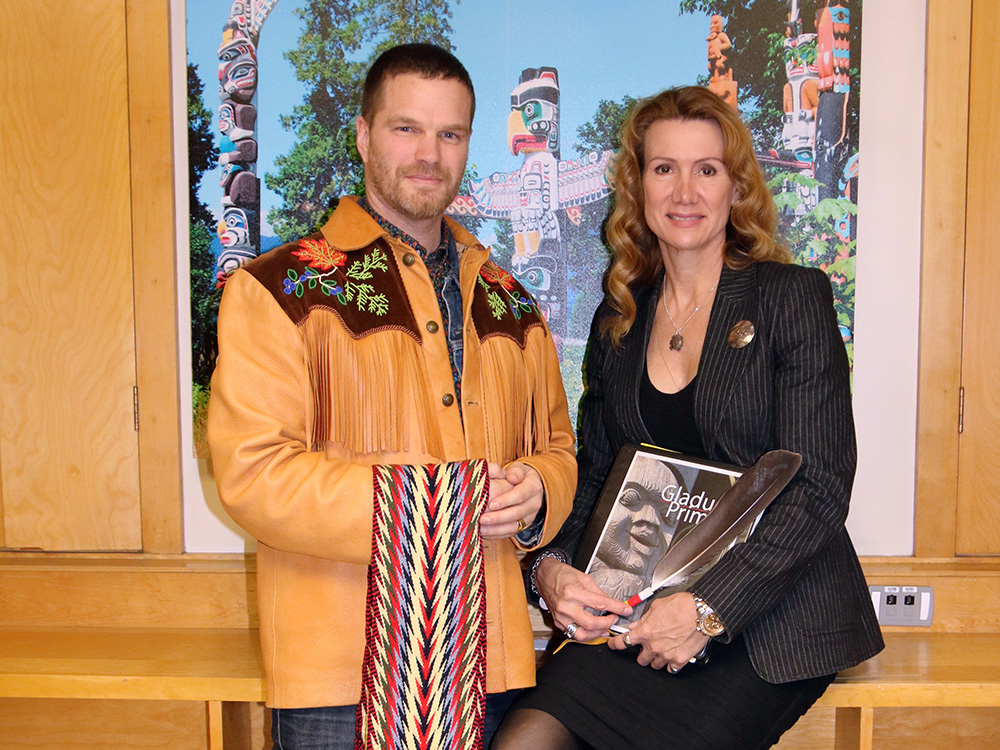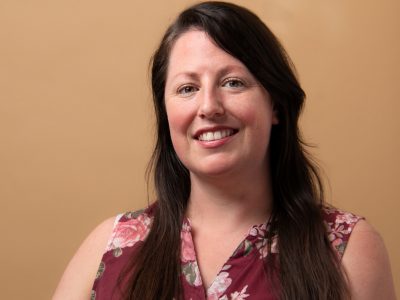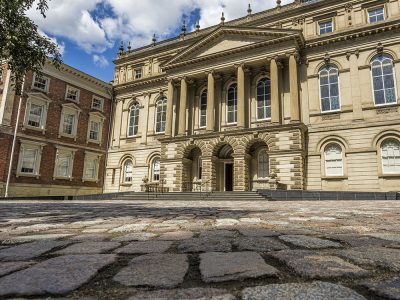
Sebastien Malette, Assistant Professor, and Jane Dickson, Associate Professor, Department of Law and Legal Studies, in Carleton University’s Gladue Laboratory.
Q&A with Professor Jane Dickson from the November/December issue of FPA Voices
In 1999, the Supreme Court of Canada formally recognized that the number of Indigenous people in prison far outweighed their numbers in the population. In response, the Court required judges to consider “the unique background and circumstances of Aboriginal people” in sentencing hearings.
Since then, the application of these so-called “Gladue requirements” has been notably inconsistent. With the help of a four-year grant from the Social Sciences and Humanities Research Council (SSHRC), Jane Dickson is looking at how Indigenous people are actually being represented in Canada’s courtrooms.
Professor Dickson, when did you first become aware of the over-representation of Indigenous people in Canadian prisons?
It was the Fall of my third year as an undergraduate at Simon Fraser University. I went to Whitehorse and clerked for a provincial court judge. It was a real awakening for me because I wasn’t aware of the magnitude of over-representation of Indigenous people in the correctional system. From that point forward, I was committed to working with Indigenous people on criminal justice.
What steps did you take?
I was doing my master’s research on what happens when orally retained legal traditions are committed to writing. It effects the way the rules are communicated, enforced and updated as a society moves forward. My research caught the attention of the Mohawk nation of Kahnawake and I ended up doing my PhD with them as they created a justice system based on Mohawk and Iroquois traditions.
For the past 20 years, I’ve worked with the Department of Justice and Correctional Services of Cree Nation Government in Northern Quebec. I wrote my first Gladue report for a Cree person in that region and then went on to write more than 70 Gladue reports for Indigenous offenders.
What is a Gladue report?
These reports are often made up of 25 or more single-spaced pages that describe the life experiences of an Indigenous offender. They’re named for the Supreme Court case that made them a legal requirement when sentencing Indigenous offenders, R v. Gladue, and are a source of background information for judges. The Court’s decision required judges to pay attention to the unique background and circumstances of Indigenous offenders when determining a sentence, and to consider alternatives to incarceration that are reasonable under the circumstances.
Some provincial and Superior courts offer recommendations on the structure, information and tone that should used in a Gladue report. But there is no national standard or training for writing them and the results are incredibly uneven. At the same time, we are hearing anecdotally that legal counsel and judges are insufficiently educated about what should be in them.
How will your research project address that?
We’re hoping to document how Gladue requirements are met across Canada, and understand how judges receive and use Gladue information in the sentencing process. In addition to these goals, we’ve set up a ‘Gladue Lab’ which will not only house our research, but provide access to information, resources and support to those working with Gladue. We will also have a website and a blog that connects to the huge database of research available. Plus, we’re creating online resources for the courts to ensure judges have access to good cultural and historical information, such as the effects of historical trauma and the current realities of Indigenous people.
It sounds like you’re hoping to standardize the Gladue process.
Well, to the degree that one can standardize a process that must capture a wide variety of cultural, historical and personal experiences, which is what Gladue reports must do. I think that we are trying to ensure that those who are responsible for providing Gladue information to the courts are able to access the education and knowledge that is necessary not only to meet the legal requirements, but also to respect both Indigenous culture and history, and the needs and realities of the courts. As far as we have been able to discern, Carleton University is the first university in Canada to offer training on writing Gladue reports as part of its Graduate Diploma in Conflict Resolution. I’m also partnering with a nonprofit group in British Columbia that is creating online training materials directed at Indigenous community members and others who wish to become certified Gladue writers.
To secure the point of view of judges, our research assistants are conducting telephone interviews to try to determine how they most commonly receive Gladue information, the sufficiency of that information and how they incorporate it into the crafting of fit sentences. We want to know the quality of it and how they use it. My co-investigator and colleague in the Department of Law and Legal Studies, Assistant Professor Sebastien Malette, will ensure the integrity of the French translation of the content.
How will this eventually help Indigenous offenders?
The Supreme Court has been clear that the purpose of Gladue reports is to remedy the over-incarceration of Indigenous people in Canadian correctional institutions, but Gladue has not proven able to affect this sort of change. We want to know why, and we want to work with Indigenous people and the courts to remedy our approach to Gladue so that we can, in turn, maximize the remedial impacts of Gladue.
We also want to make it as easy as possible for those who qualify for Gladue reports to actually get one, and ensure that the report they receive meets the legal standards, and is comprehensive and well-written. This is the contribution we hope to make, and we hope it will make a real difference in the lives of those whose paths cross with Gladue.
Wednesday, November 22, 2017 in Department of Law and Legal Studies, FPA Voices
Share: Twitter, Facebook



